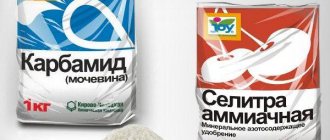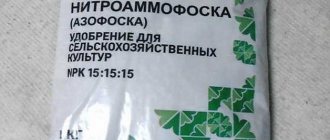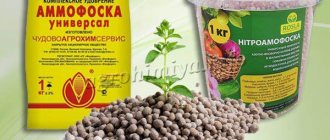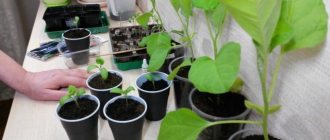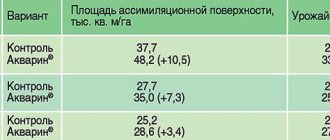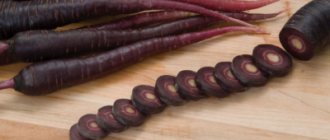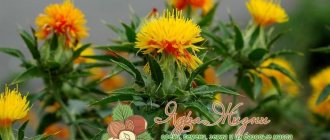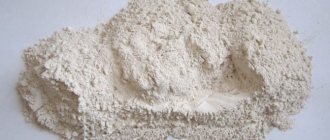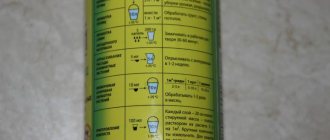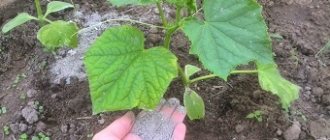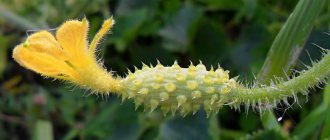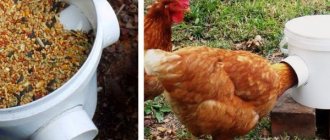What features does potassium nitrate have?
The additive is characterized by the following properties:
Potassium nitrate, or potassium nitrate, is a mineral fertilizer that is widely used in agriculture.
- has the appearance of white, sometimes yellowish, odorless crystals, reminiscent of powder;
- sold in bags with a capacity of 1 to 50 kg;
- dissolves well in water; hydrazine, glycerin, liquid ammonia (but not ether or ethanol) are suitable for the same purposes;
- melts at very high temperatures;
- easily ignites when heated, thereby presenting a danger;
- the composition is not volatile;
- free from harmful additives;
- does not affect soil acidity;
- effective for soils poor in potassium and plants that cannot tolerate chlorine (potatoes, grapes, tobacco);
- used on open and closed soil: in the garden, flower bed, when feeding indoor flowers;
- combines well with other water-soluble fertilizers;
- Cakes in case of long-term storage in non-hermetically sealed packaging.
What is it, composition and action
Potassium nitrate is a type of potassium fertilizer. They are colorless crystals of various structures of inorganic origin, highly soluble in water. Does not have a pronounced odor.
Melts at a temperature of 334-335 degrees. C, at an elevated melting point, the compound decomposes with the further release of oxygen. It is characterized by a slight degree of hygroscopicity - it absorbs water vapor from the air (caking over time).
According to toxicometric indicators, according to international standards, the fertilizer is practically non-toxic.
The main source of potassium nitrate is the mineral nitrocalite. In nature, large deposits are found in India and the countries of South and Southeast Asia. The fertilizer has a synonymous name - Indian saltpeter.
Chemical formula – KNO3. The active ingredients of potassium fertilizing are potassium + nitrogen + oxygen.
In potassium nitrate up to 45-46% potassium is the main nutritional element:
- regulates the full and uniform development of plants;
- optimizes water and protein metabolism;
- protects open ground crops from daily temperature changes, from heat in summer and hypothermia in the cold season;
- stimulates the germination of seed material;
- directly affects cell formation;
- prevents the proliferation of pathogenic environments.
Nitrogen (up to 13%) is a vital element for soil, garden and garden plants:
- is part of proteins (the basis of life of all cultures), nucleic acids (transmission of hereditary, varietal properties), chlorophyll (accumulation of solar energy during photosynthesis), enzyme catalysts of biochemical processes, vitamins, alkaloids and other compounds involved in metabolism;
- nitrogen nutrition stimulates protein synthesis and affects the intensity of growth processes;
- ensures the development of vegetative organs (enhances fruiting, increases productivity and the amount of protein in fruits and root crops).
Important : nitrogen is contained in the exact combination and form, which ensures immediate absorption of fertilizer by plants.
What is this remedy used for and how does it work?
Potassium nitrate is used to influence vegetation in the following directions:
- improves the absorption of substances by the root system, increases its branching;
- balances photosynthesis;
- accelerates growth;
- improves the quality of tissue structure;
Most often it is added as an additional food for plants that absolutely do not tolerate chlorine.
- increases stress resistance, frost resistance and immunity;
- increases productivity (number and size of fruits);
- prevents cracking of fruits, increases their safety;
- improves the taste of fruit and berry products, promoting the accumulation of sugar (beets, grapes);
- prevents the development of bacteria and fungi.
Proven pros and cons of fertilizer
Potassium nitrate is classified as a complex fertilizer due to its wide spectrum of action. Pros of use:
- stimulates the growth and strengthening of planting roots;
- plant defense mechanisms, resistance to drought and temperature changes are activated;
- photosynthesis is accelerated, which allows you to get a harvest faster in cold regions;
- the green part of the plants receives the necessary nutrition for proper development;
- the appearance of agricultural products improves;
- it is possible to significantly increase the volume and shelf life of the crop.
Potassium nitrate is not a toxic substance if the dosage is followed. An excess leads to the accumulation of nitrogen in fruits, so the amount of processing of berries and vegetables is reduced to 2–4 per season. Due to the excess, the accumulation of nitrates will exceed the norm, which is unacceptable for food use and commercial use of the crop.
The disadvantages of potassium nitrate include the effect on soil properties (salinity, acidity). Therefore, before you start using the drug, tests are carried out for compatibility and appropriateness of use. Other disadvantages are the lack of microelements in the composition and rapid leaching from the soil.
For which crops is potassium nitrate used most often?
Expert opinion on potassium nitrate
A successful combination of two main components of plant nutrition. In this embodiment, nitrogen and potassium do not interfere with the absorption of each other, as when using mixtures with their separate inclusion. Stimulates the development of powerful roots, strong stems, improves the taste of fruits. Cannot be applied simultaneously with organic fertilizers.
Anatoly Baykov
Fertilizing the following types of vegetation with this product is most effective:
- root vegetables (beets, carrots);
- berry plants (tomatoes, currants, strawberries, raspberries, blackberries, blueberries, grapes, gooseberries);
- fruit trees.
A lesser effect is observed when feeding potatoes, cabbage, radishes, and herbs.
What methods of feeding with this product are most productive?
They practice adding dry matter, but the fastest effect is observed when using a 2% aqueous solution.
Potassium from this fertilizer is much more useful for fruit trees and berries, including tomatoes
There are two common ways to use potassium nitrate solution:
- Root feeding. It is carried out once every 14 days by applying a working solution under the plant at the rhizome.
- Foliar feeding is spraying with a sprayer. It is carried out 2 to 4 times during the entire growing season. Requires a higher concentration of the substance in the solution (approximately 2.5 g/l), since part of it evaporates from the foliage and is washed off during subsequent watering. Product consumption:
- for vegetables, flowers and ornamental plantings – 0.7-1 l/sq.m;
- for berries – 1 l/sq.m;
- for fruit trees - 1.5-7 l/sq.m (depending on the age and density of the tree crown).
After each application, water the vegetation thoroughly.
ATTENTION! Do not mix potassium nitric acid crystals with organic fertilizers (compost, peat, straw, sawdust, manure).
Advice from experienced farmers
M. Melnikova, director of the Lipogorye scientific center (Perm State Agricultural Academy), gives several useful recommendations on the use of nitrate as a fertilizer.
Potassium nitrate is especially effective for cucumbers; you can feed vegetables in a greenhouse and in open plantings.
The formation of the plant and the cucumber fruit itself is a constant process; in addition to watering, optimal temperature, lighting, blinding of internodes (removal of side shoots), additional long-term nutrition is required.
The fact is that the root system of cucumbers is superficial and cannot be restored even with minor damage. The concentration of the mother liquor for this culture should be reduced.
Potassium nitrate is an ideal fertilizer choice based on the ratio of potassium to nitrogen and phosphorus. In addition, the fertilizer is completely soluble and does not contain chlorine. The greens develop evenly, do not crack, are stored for a long time, do not turn yellow and do not overripe.
Fertilizer prevents leaves from edge burn (due to potassium deficiency).
Recommendations:
- Apply in liquid form, do not mix with organic matter;
- observe the dosage, apply through watering every 10 days, starting from the moment the cucumber ovary appears;
- do not exceed the dosage - 25 g per 10 liters of water (solution concentration no more than 3%);
- the procedure is carried out in cloudy weather or in the evening after watering;
- The norm for treating leaves is 7-8 g per 10 liters of water.
Best time to use
It is recommended to use the supplement during certain periods:
- The substance should be applied for the first time in the month of April.
- The second time - during sowing of the soil (May).
- Provide the soil with nitrogen from the beginning of bud formation to the ripening of fruits.
- In summer, feed the vegetation foliarly, being careful not to overdo the amount of substance applied. Such fertilizing should be stopped a month before harvest.
- Autumn fertilization of fruit trees will increase their frost resistance.
After applying potassium nitrate, the quality and quantity of the crop significantly improves
Compatibility with other fertilizers
A liquid solution of potassium nitrate, prepared at home, can be mixed with other drugs to increase their effectiveness. For example, a solution of potassium and ammonium nitrate is often used to feed fruit trees and shrubs.
In addition, this substance can be combined with lime fertilizers, potassium chloride, phosphate rock, urea and potassium sulfate. However, remember that any solution of complex fertilizer must be prepared in strict accordance with the instructions for the drug to really benefit the plants.
Potassium nitrate - instructions for use for garden crops
Farmers and gardeners advise using potassium nitrate for specific vegetable crops:
- Cucumbers. Fertilize with a solution in the fruiting phase. The yield increases, but not the growth of greenery (stems and leaves).
- Tomatoes. They show watering the seedlings when they have 4 developed leaves. Also, repeated treatment with potassium nitrate is necessary a week before planting seed in the soil and during picking bushes.
Root application of the drug during the flowering phase of tomatoes will increase productivity by 40%.
- Roots. Potatoes, carrots, radishes and other crops are supplied with potassium nitrate components by adding crystals of the dry preparation directly into the ground (up to 50 g/sq.m.) during spring digging. Root crops are planted after a few days. Please note:
- Potatoes are processed during hilling, at the peak of potato tops development. It is recommended to mix this additive with phosphorus for better effect;
- cabbage and radishes are strengthened with potassium nitrate mixed with calcium;
- beets and carrots prefer the product without impurities.
As a fertilizer, potassium nitrate can be applied to plants in both dry and liquid form.
How to use potassium nitrate
Potassium nitrate is used throughout all seasons. The first fertilizing is applied in the spring, immediately at the beginning of the growing season.
Method of application: digging or plowing.
After this, it is used for fertilizer, both root and basal.
. In the first case, fertilizer is applied immediately under the root, in a circle near the trunk, in the hole for planting. The foliar method consists of spraying or simply wetting the foliage. The latter method is more effective, since it is through the surface of the leaf that better absorption occurs than through the roots.
The most optimal use of potassium nitrate is a complex method that combines spraying and watering at the same time
.
To apply fertilizers outside the roots, a larger amount of substance is required, since evaporation occurs through the leaves. And also some of the fertilizer may simply be washed away by rain. During the growing season, fertilizing is applied 4 times, with an interval of 10 to 15 days.
On a note:
Potassium nitrate can also be used in dry form. It's even better for fertilizing root crops. For other crops, the liquid form is more effective.
As for exceeding the amount of fertilizing, this is undesirable, as this will affect the fruits. They will contain an excess concentration of nitrates.
Dosage:
• to prepare a solution for root fertilizer, use saltpeter in a volume of 15 to 25 g per 10 liters of clean water.; • for spraying they make a high concentration, more than 25 grams for the same amount of water; • the last time fertilizing is applied three to four weeks before harvesting the fruits.
Once again it is worth saying that you should not exceed the number of feedings more than 4 per year, as this will increase the concentration of nitrates in the fruits
.
Flowers and other decorative crops of open areas
Flower and decorative plantings of flower beds and garden plots also need additional nutrients, including potassium nitrate.
It is added in quantities:
- with root feeding - 1.5 g/l;
- when spraying – 2.5 g/l (consumption – 0.7 l/sq.m).
It is used no more than 2 times per season, as a rule, on the eve of planting flowers in a flower bed (applying a dry preparation when digging up the ground). Thus, the soil is enriched with minerals. Root fertilization with a solution is carried out several days before flowering.
Saltpeter is intended for certain varieties that do not react well with other types of fertilizers
First of all, potassium nitrate is indicated for flowers:
- small-bulbous;
- rhododendrons;
- dahlias, tulips, gladioli;
- lilies;
- clematis.
Preparation, dosage
Potassium nitrate is sold in dry form. To use it as a fertilizer, it is enough to dilute it in the required proportions with plain water.
You can prepare the fertilizer yourself. Main ingredients for this:
- potassium chloride – 10 g;
- ammonium nitrate – 95 g;
- distilled water;
- gauze for filtration;
- drying paper.
The algorithm for obtaining potassium nitrate is as follows:
- Pour potassium chloride into a glass bottle (take the unrefined substance), add hot water - there should be three times less dry substance. Mix everything thoroughly.
- Filter the composition using gauze. The resulting solution should be almost transparent and have a pink tint.
- Dissolve ammonium nitrate in hot water. There should also be three times less dry matter.
- Mix both solutions and heat, use a water bath. When heated, needle-shaped crystals will begin to appear - a signal to turn off the fire.
- Allow the solution to cool slightly, then pour into a suitable container and allow to cool completely. The composition cannot be placed in the cold; the cooling process must be natural.
- When the solution has completely cooled, place it in the refrigerator for 2.5 hours and then in the freezer at 0 degrees.
- After 3 hours, remove the container from the freezer and carefully drain the water - it is better to use gauze or cotton cloth. Dry the sediment formed at the bottom on paper for 3-4 days. This is potassium nitrate.
When preparing potassium nitrate yourself, all manipulations, especially heating, should be done in a room with a hood. All utensils used must be clean and dry. It is important not to allow the substance to come into contact with sugar - this is an explosive combination.
How to make potassium nitrate at home is shown in this video:
Making the substance yourself is profitable, but time-consuming. Fertilizer can be purchased at almost any gardening store.
If liquid root feeding is planned, then potassium nitrate is dissolved in water. The proportions depend on the plant being fed. For a 10-liter container you need:
- 10 g for vegetables;
- the same amount for ornamental shrubs;
- 15 g for flowers;
- 10-20 g for berry bushes;
- 20-25 g for fruit trees.
Foliar feeding is prepared as follows: dissolve 25 g of the substance in a 10-liter container. The required amount of solution depends on the area being treated. For 1 sq. m required:
- 1 liter for vegetables, strawberries, ornamental plants (including flowers);
- 1.5 l for berry bushes;
- 2 l for bushes and young fruit trees;
- 5-8 liters for mature fruit trees: you need to focus on planting density, age (the older the plant, the more fertilizer it needs) and the height of the trees.
If you use dry fertilizer, then calculate its amount per planting area. When adding potassium nitrate before planting, 50 g of the substance is required for each square meter.
Rules for using potassium nitrate for indoor plants
According to experts and consumer reviews, the dosage prescribed for flowerbed plants, in the case of indoor plants, should be halved. That is, use a working solution at a concentration of 0.5 g/l.
Fertilizer is especially useful for:
- violets;
- begonias;
- orchids;
- ferns and other exotics of subtropical origin.
Deciduous decorative plants prefer watering with a complex solution twice a month. To prepare it you will need:
- water (1 l);
- potassium nitrate (0.1 g);
- ammonium nitrate (0.4 g);
- simple superphosphate (0.5 g).
The working solution cannot be stored; after preparation it must be used immediately.
When growing vegetables and indoor plants in greenhouses, saltpeter is used to strengthen plants
Precautions and storage of the drug
When choosing KNO3 for feeding plantings, remember that potassium nitrate is a dangerous substance:
- is an oxidizing agent that quickly reacts with various flammable substances;
- toxic;
- a high concentration of the solution can cause irritation and chemical burns in humans.
The substance should be stored in sealed packaging, separately from other fertilizers and household chemicals, and also away from flammable substances and heaters. The bag with bait must be protected from direct sunlight.
Safety precautions during use:
- Do not inhale, taste, or apply the solution to your skin.
- Wear gloves, closed clothing and shoes when working with working solution and dry granules. When foliar feeding (spraying), protect your respiratory tract with a respirator and your eyes with special goggles.
- Do not use kitchen utensils when working with saltpeter.
- Heating the substance is very likely to cause fire or explosion, so do not use it in hot weather. For the same reason, do not mix the product with substances of organic origin. Do not smoke or light a fire near it.
First aid:
- If the substance comes into contact with your skin, rinse it with cold water;
- in case of contact with the eyes, it is also recommended to wash them (during which the eyelids should be kept open);
- If you get a burn, apply a sterile bandage to the affected area and consult a doctor.
Storage Features
When storing potassium nitrate, it is important to consider the following points:
- The fertilizer packaging must be reliable and sealed.
- The hygroscopicity of potassium nitrate is insignificant, but the fertilizer should still be stored in a dry place. Potassium nitrate may absorb small amounts of moisture. In this case, the fertilizer may cake. It is enough to dry it and break it mechanically. The properties of potassium nitrate are not affected.
- Potassium nitrate is an explosive substance. Do not store it near incandescent light bulbs (which turn on), heating and heating devices, flammable substances and alkaline compounds.
- Fertilizer should be stored in a place inaccessible to children and animals.
Potassium nitrate is a universal fertilizer that can be used for almost all plants. The substance is a chemical compound, so you need to work with it carefully. It is recommended to buy fertilizer immediately before use and in limited quantities so as not to store it for a long time.
